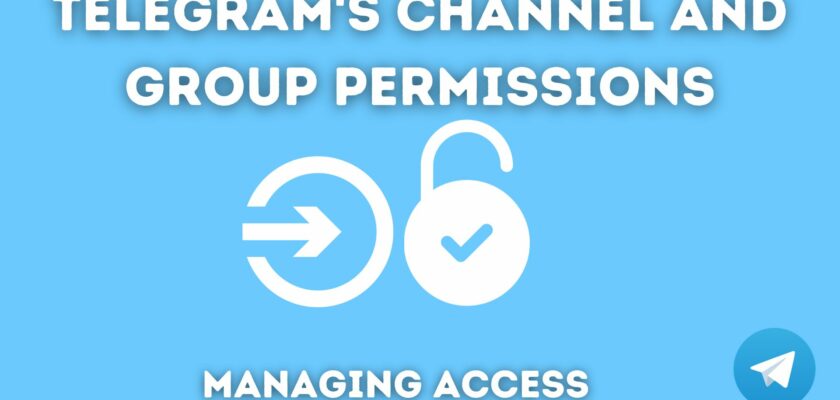With the rapid growth of digital communities and information sharing, it has become increasingly important to maintain control over who can access and participate in discussions. Telegram, a versatile messaging platform, addresses this need by providing comprehensive channel and group permissions.
These powerful features empower administrators to manage access, control content distribution, and create tailored experiences for members. In this article, we’ll delve into how Telegram’s channel and group permissions are transforming the way we navigate and control access to discussions, ensuring secure and meaningful interactions.
Telegram’s Channel and Group Permissions: A New Realm of Access Control
In a digital landscape where privacy and security are paramount, Telegram’s channel and group permissions offer a range of controls that shape the user experience and the flow of information.
Tailoring Access Levels
Admin Roles: Telegram offers a hierarchy of admin roles with varying levels of control, allowing administrators to delegate responsibilities effectively.
Member Privileges: Different member roles, such as regular members, moderators, and admins, allow for custom access to content and interactions.
Managing Content Distribution
Message Posting: Admins can control who can post messages in channels and groups, ensuring that only authorized individuals contribute content.
Moderation Control: Moderators can review and approve messages before they are posted, maintaining the quality of discussions.
Using Telegram’s Permissions
Admin Hierarchy: Utilize Telegram’s admin hierarchy to assign roles with distinct permissions, ensuring efficient and organized management.
Customize Permissions: Tailor permissions based on the role, enabling specific actions like adding new members, posting messages, or managing content.
Secure and Controlled Interactions
Restricted Access: Telegram’s platform allows admins to set restrictions on who can invite new members, ensuring a controlled influx of participants.
Bots and Services: Admins can control the types of bots and services that are allowed to interact within the channel or group.
Enhancing Community Engagement
Interactive Engagement: Channel and group permissions enable admins to encourage meaningful discussions by allowing certain members to participate.
Quality Content: By moderating posts and discussions, admins ensure that content remains relevant, respectful, and aligned with the group’s purpose.
Respecting Privacy
Selective Sharing: Admins can restrict access to certain features or content, safeguarding the privacy and comfort of group members.
Restricted Forwarding: Telegram’s platform allows admins to limit message forwarding, preventing the rapid dissemination of content.
Navigating Group Dynamics
Structured Engagement: Channel and group permissions enable admins to create structured discussions, ensuring focused and relevant interactions.
Member Moderation: By controlling who can add members, admins maintain the group’s purpose and avoid spam.
End-to-End Encryption and Privacy
Privacy Assurance: Telegram’s end-to-end encryption ensures that discussions, regardless of permissions, remain private and secure.
Secure Conversations: Telegram’s commitment to security guarantees that even with varying permissions, conversations are protected.
Conclusion On Telegram’s Channel and Group Permissions
Telegram’s channel and group permissions redefine how we manage access and interactions within digital communities. By offering a range of controls that cater to the needs of administrators and members alike, Telegram ensures secure, tailored, and meaningful engagement.
As the digital landscape continues to evolve, Telegram’s dedication to providing tools that empower administrators to manage access reaffirms its position as a platform that values the importance of privacy, controlled interactions, and the ability to shape the user experience within digital communities.


